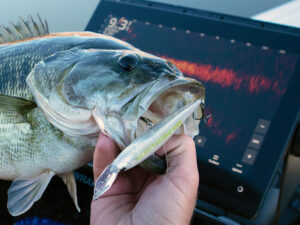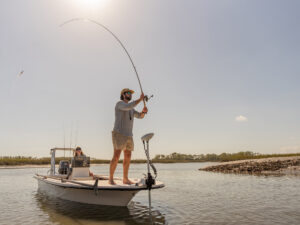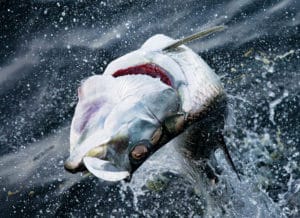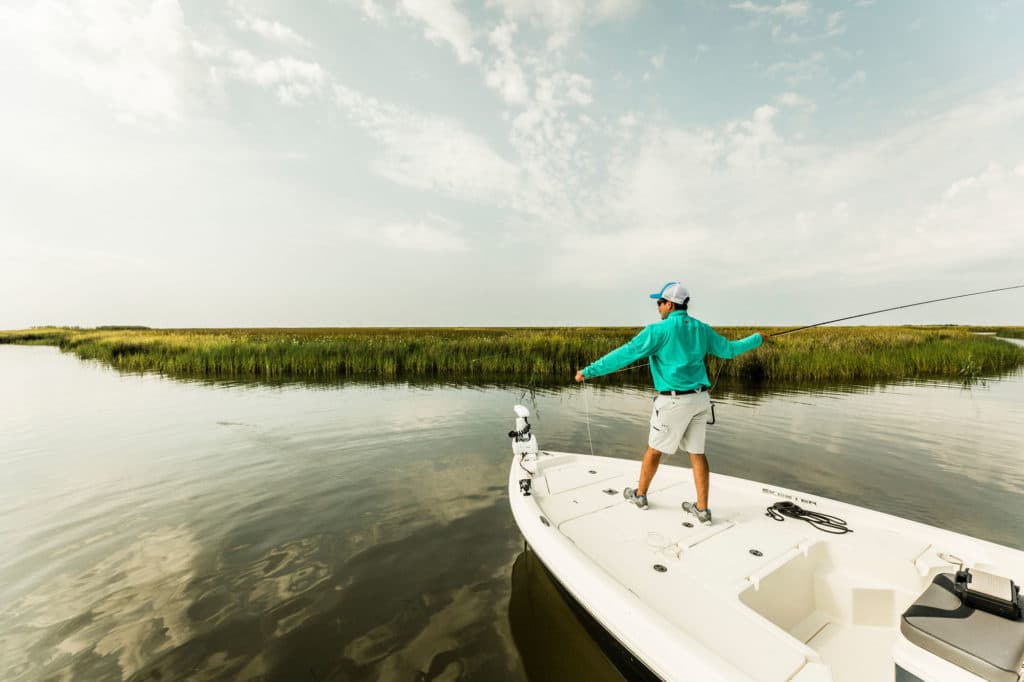
If you ask non-anglers to define a “boat shoe,” they would likely describe the traditional Top Sider—a cross between a moccasin and a loafer with leather upper and white rubber sole. These stereotypical boat shoes are often worn sockless on college campuses, for casual dining at seaside destinations, as well as on deck. They’re popular with good reason—they’re practical, comfortable, water-resistant, slip-on, stylish and superior on slick surfaces. They also have a storied maritime history.
The Sperry Top-Sider is the original boat shoe. Its inventor, Paul Sperry, was born in New Haven, Connecticut, the location of Ivy League school Yale University, but also a city fronting Long Island Sound. Sperry loved to sail, and one day in the early 1930s he slipped on deck and fell off his boat.
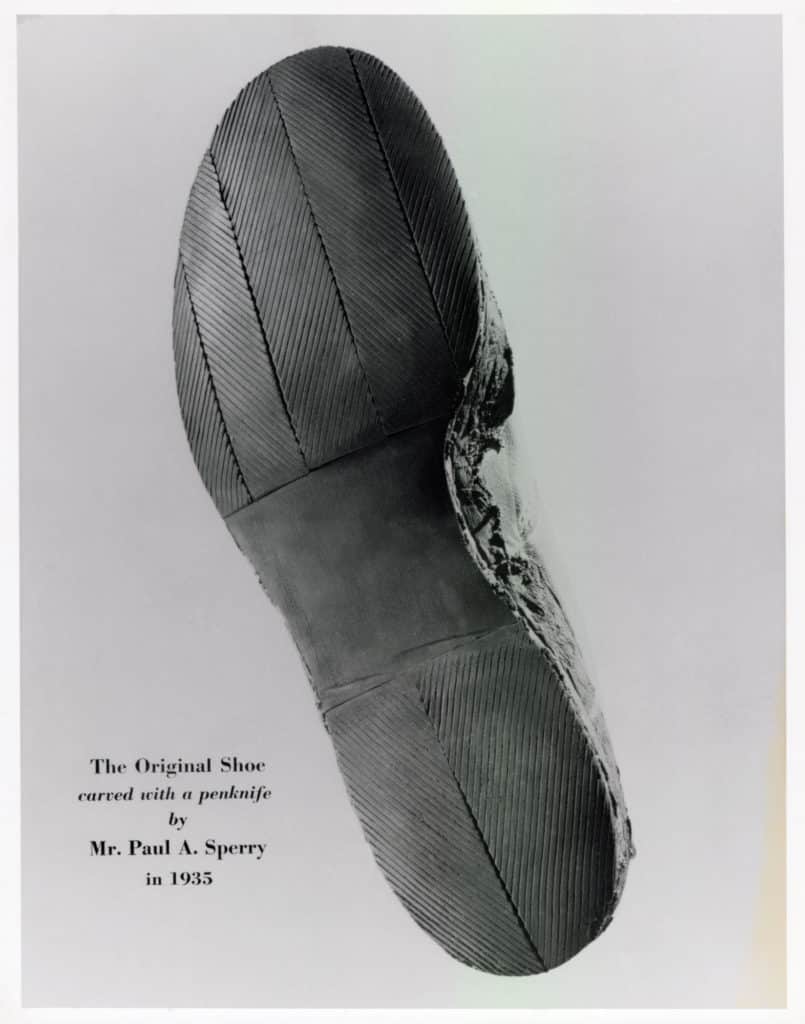
Back then, there weren’t any good options for non-slip deck shoes. Sperry wanted to solve that problem. He worked through the winter of 1935 trying to develop a solution, but his big “a-ha!” moment came when walking his dog Prince. Sperry continually slipped on the ice, but his dog didn’t. A close inspection of Prince’s paw pads revealed the tiny lines and ridges that helped him grip slippery surfaces.
Sperry used a penknife to make parallel slashes in the sole of his prototype shoe, but eventually he developed a machine to cut zigzag patterns into the soles, and he applied to patent the design. Unknown to Sperry, however, John Sipe had developed this idea years earlier. Sipe patented the technology for auto tires in 1923. That process is still called “siping.”
All About the Grip
Siping, whether applied to tires or boat shoes, describes cutting or molding thin slices through rubber to improve traction on smooth, wet surfaces. Rugged, lugged soles are disadvantageous—and even dangerous—on a wet, pitching deck. That’s because manufacturers must exclude large amounts of stiff rubber to create lugs on hiking shoes, and the aggressive pattern means there’s less rubber to contact a smooth deck. Siping removes a minimum amount of a sole’s surface while creating suction-like grip from toe to heel and works best in conjunction with pliable rubber.
“The single most important feature of a boat shoe,” says Capt. Chris Elser (ct-fishing.com), who has over 40 years chartering experience in choppy Northeast waters, “is superior traction on wet and dry surfaces. The soles must also be non-marking, flexible and provide good cushioning.”

Many Options
From the mid-1930s to present, manufacturers have constructed boat shoes of canvas or oiled-leather uppers with non-marking—traditionally white—siped soles. Although the Top-Sider style remains popular, leather and canvas don’t perform as well as synthetic materials in a constantly wet environment. Today’s shoes are light, quick-dry, quick-drain, cushioned, breathable, odor resistant, comfortable and sometimes 100-percent waterproof.

Shimano’s Evair Marine Fishing shoe, for example, features a midsole of EVA (a synthetic elastomeric polymer, which is foam-rubber-like in softness and cushioning, flexible, durable, stress-crack tolerant, waterproof and UV-resistant) with an upper of a quick-dry, breathable mesh fabric. The non-marking rubber sole features wide and narrow siping, and an innovative heel bends down to serve optionally as a slip-on.
“Footwear purpose-built for a saltwater environment,” says Bo Thai, product marketing manager at XtraTuf, “can dramatically improve a fisherman’s performance and safety. Anglers should understand their fishing environment, and then select the right footgear for it. Factors include water and air temperature, whether shoes will be worn socks or sockless, type of fishing, and level of protection required.”
Cross-Overs
“Cross-overs” are hybrid products satisfying more than one purpose or need. Grundéns, famous for extreme-duty outerwear and fishing boots, offers a hybrid between a boat shoe and a deck boot called the Deck-Boss Slip On. Like Grundéns ankle-boot in construction, the Slip On was designed for angler comfort. Using a thermoregulated, anti-microbial cooling liner, these waterproof shoes are made to slide on easily and keep feet cool, dry and comfortable. The Slip On’s sole is non-marking, siped gum rubber for flexibility and traction.
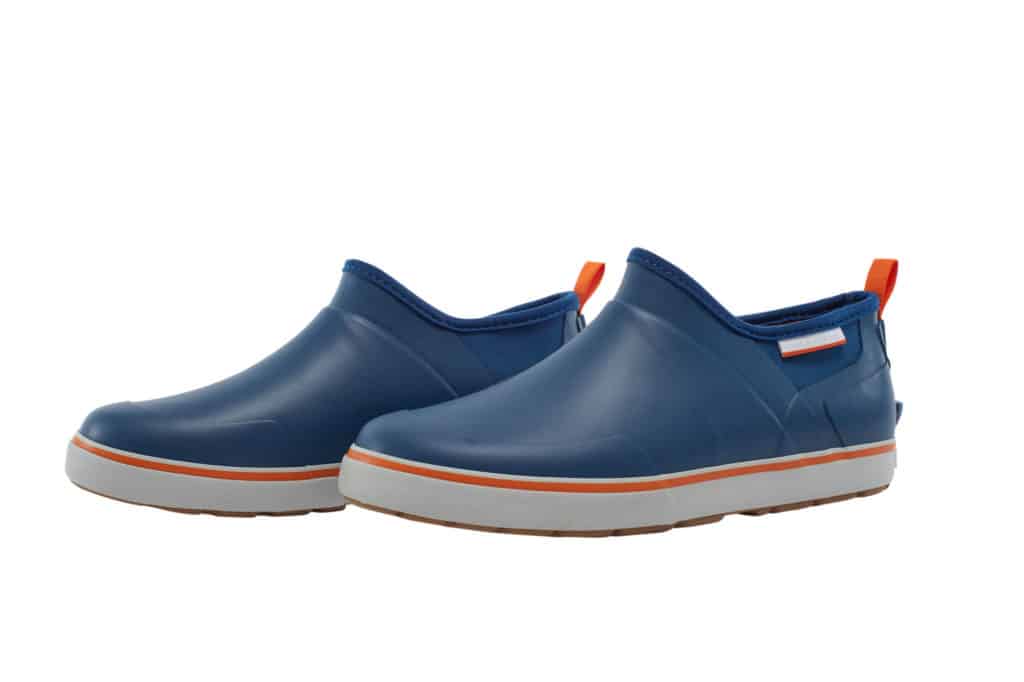
“After traction,” says Elser, “the next most important shoe feature is comfort. Some boat shoes run narrow, so make sure the fit is ideal for you, especially if you have wide feet. Following that are stability and support. Additional points are breathability, flexibility, water drainage, and anti-microbial treatment. I prefer a laced, athletic-style shoe to ensure a snug fit. But slip-ons are convenient, and you never need to worry about tripping on an untied lace on deck. For rough conditions, however, I strongly recommend sticking with laced shoes.”
XtraTuf offers a new laced boat shoe called the Topwater. Designed for light- or heavy-duty deck use, it features a rubberized TUF fabric upper, which provides durability in high-wear areas, yet it’s breathable for all-day comfort. The Topwater’s sole is SRC-rated (SRC-rated footwear has the highest slip-resistance rating achievable in a class of shoe or boot) for optimum grip.

Like other manufacturers, Huk creates a wide range of boat shoes. Its new Mako fishing model looks like a high-performance cross-training fitness shoe. The upper is a lightweight air mesh for breathability, and it conforms to your foot for a custom fit. A dense EVA midsole is durable and comfortable, and water drains quickly to keep your feet light. Huk calls the Mako’s sole “slice” traction to describe the multi-directional siping to grip all directions on a wet deck.
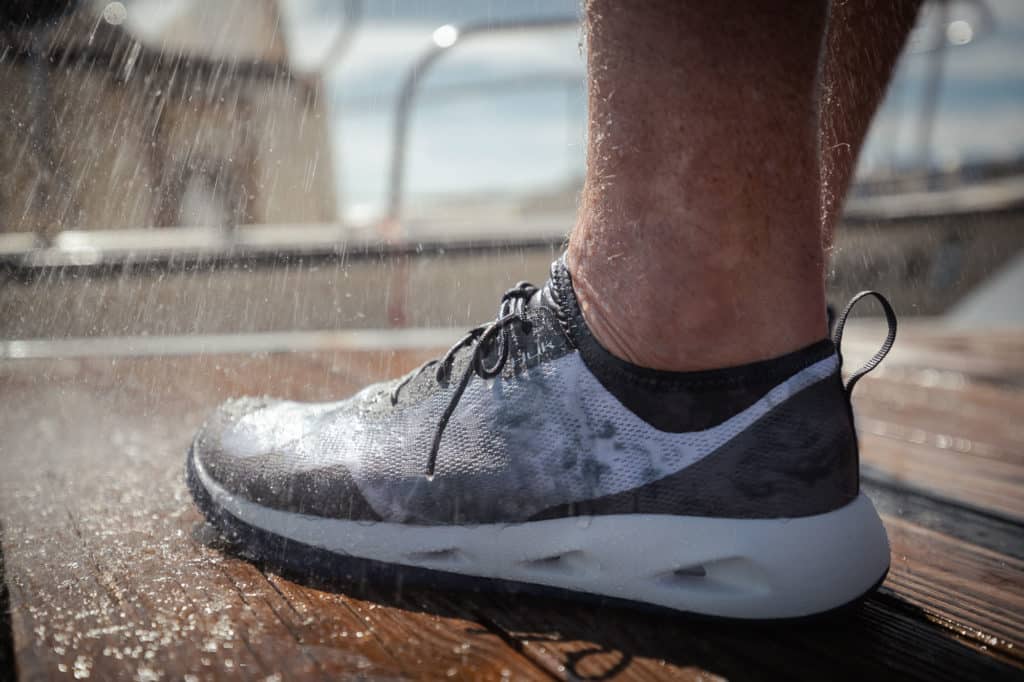
Why Not Running Shoes?
Why not just wear a pair of running shoes on deck? For one, the tread on most running shoes is too aggressive, which means there’s less material contacting the deck and therefore less grip on slick surfaces. But running shoe soles are also designed differently.
“Just like any other purpose-built shoe,” says Elliott Taylor, a lifelong saltwater angler and director of graduate school recreational sports at Yale University, “boat shoes have a different offset from running shoes. ‘Offset,’ or heel-toe drop, is the difference between the thickness of material under your heel and the thickness of material under your forefoot, which is key to providing long-term comfort.
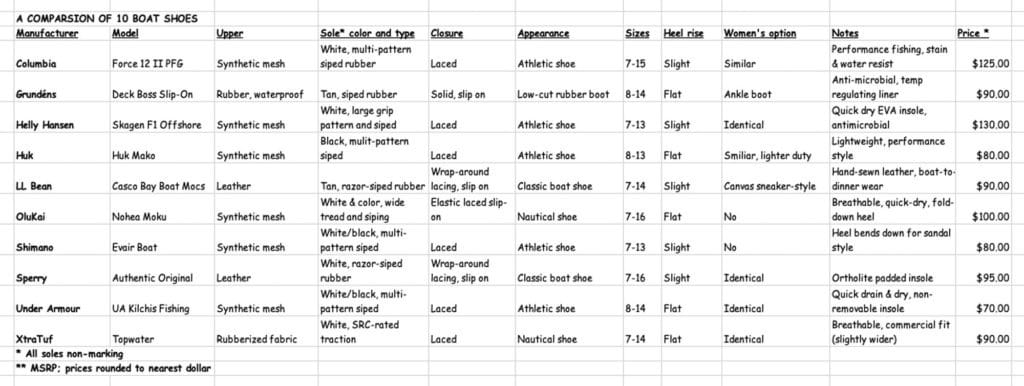
“Running shoes are extremely comfortable, but their heel offset is usually much higher than in boat shoes. One reason is to lean the foot and body forward to help propel the runner. Standing on deck all day in running shoes could eventually lead to lower-back stiffness, foot fatigue and sore legs. Boat shoes use a lower offset, providing you with a more natural, barefootlike balance and stance, which improves weight distribution, posture, comfort, and stability on deck.”
OluKai makes a boat shoe called Nohea Moku, which has no heel-toe offset and is designed to improve upon the traditional boat shoe. It has no-tie laces and a breathable, stretch-bootie construction for a barefootlike feel and wear. Its fold-in heel creates optional slide-on ability. A dual-density anatomical PU (an organic polymer known for resilience and compression resistance) footbed with gel insert creates all-day ease.
Read Next: More Boat Shoe Reviews
“With today’s boat shoes,” concludes Taylor, “although your feet might get wet, they don’t have to stay wet. And at day’s end you can walk straight from deck to dinner in style and comfort.”

